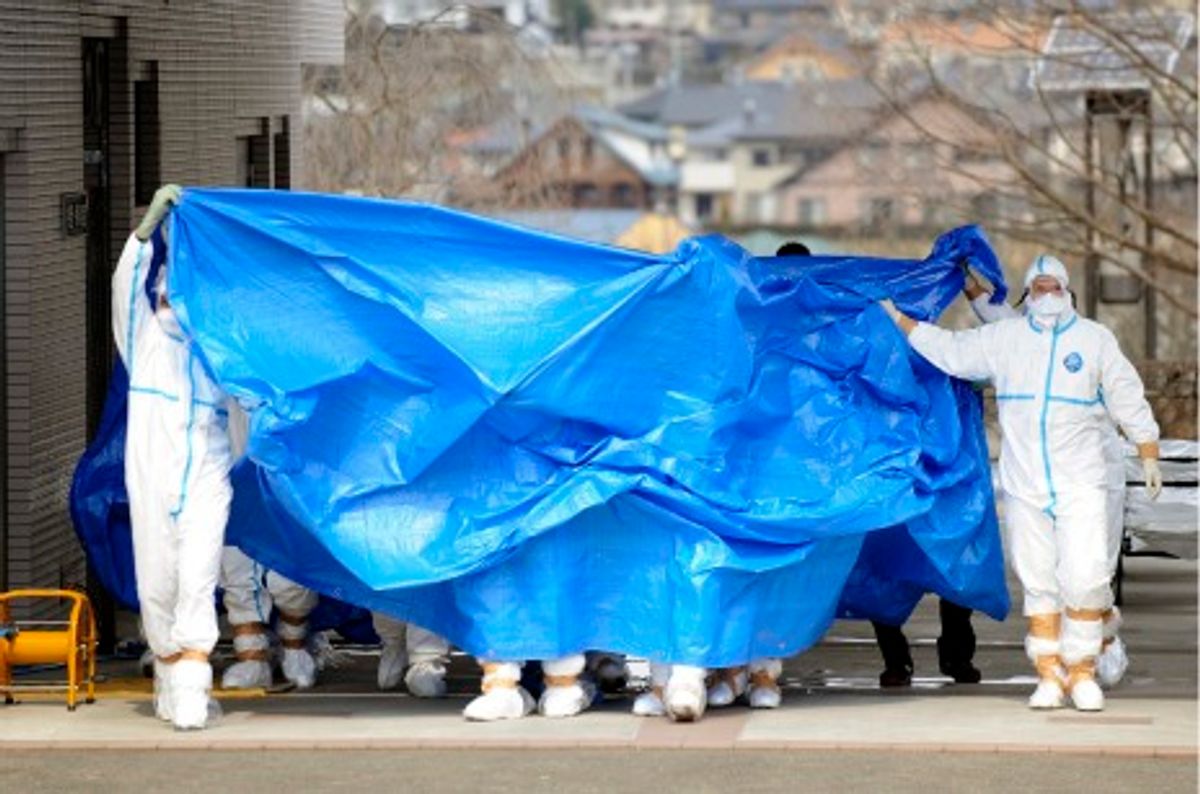Editor's Note: John Boyd is an IEEE Spectrum contributor reporting from Kawasaki, Japan. This is part of IEEE Spectrum's ongoing coverage of Japan's earthquake and nuclear emergency. For more details on how Fukushima Dai-1's nuclear reactors work and what has gone wrong so far, see our explainer and our timeline.
Two weeks after the March 11 earthquake and tsunami struck Japan, the damaged Fukushima Dai-1 nuclear power plant remains a dangerous and volatile place. High radiation levels continue to hamper the progress of the firefighter crews spraying water into spent fuel storage pools, and of the repair crews attempting to restart pumps and cooling systems in the explosion-wrecked reactor buildings. In the wake of an accident that exposed three workers to radiation, Japan's Nuclear and Industrial Safety Agency told reporters that radioactive materials may be leaking from the reactor in building No. 3.
The accident was a serious setback after a week that began with gradual progress, as Tokyo Electric Power Company (TEPCO) made headway in reconnecting the plant's six reactor buildings to the electricity grid.
On Thursday three workers were rushed to hospital after being exposed to high radiation levels at the plant. The three TEPCO subcontractors were laying electrical cables in the basement of the turbine room behind the No. 3 reactor building when they stepped into water contaminated with radiation, and received doses of between 173 and 180 millisieverts. The upper limit of exposure for nuclear plant operators dealing with an emergency is usually a cumulative dose of 100 millisieverts per year, but Japan has raised its threshold to 250 millisieverts per year for workers coping with the crisis at Fukushima Dai-1.
The workers were taken to a hospital for radiation monitoring--the image above shows Japan Self-Defense Force members in protective clothing preparing to transfer the injured workers to the hospital. Two of the men are being treated for severe radiation exposure to their feet; they may have suffered skin burns from beta particles. The third worker was wearing boots and apparently wasn't seriously injured.
Early Friday morning, a Nuclear and Industrial Safety Agency (NISA) official told reporters that the a dosage meter used by the workers warned of high radiation levels but the workers continued with their task. The official added that NISA had "doubts about radiation management measures" and the safety of the workers and these doubts had made known to TEPCO. Additional media reports said the subcontractors had been working in water as deep as 30 centimeters with high levels of radiation, while NHK reported that high levels of radioactive cerium-144 and iodeine-131 had been measured in the water, substances generated during nuclear fission.
Kyodo News reported that the two hospitalized men were not wearing rubber boots at the time of the accident. When the radiation alarm went off, the workers apparently thought it was due to a dose meter malfunction. Kyodo also said there was no-one present to specifically monitor radiation.
In a press conference on Friday morning, Hidehiko Nishiyama, deputy director general of NISA, explained the incident's implications. "The water had 10,000 times the radiation as is found in water circulating in standard operating reactor," Nishiyama said. He added that the high radiation level indicated that fuel inside the reactor may be damaged in some way, and suggested that the No. 3 reactor vessel may be leaking. TEPCO officials have been particularly concerned about the No. 3 reactor because it's the only one of the plant's six reactors that uses a mix of uranium and plutonium fuel.
However, not everyone believes that the No. 3 reactor vessel has been breached. A nuclear expert from Osaka University told NHK viewers that because the pressure in the No. 3 reactor was reported to be stable, it was more likely that a pipe or a valve in the reactor's water circulating system could be cracked. It's also possible that the spent fuel storage pool in the No. 3 building is the source of the radiation leak, but that's considered less likely.
Japan's Chief Cabinet Secretary held a press conference later on Friday to advise residents living between 20 and 30 kilometers from Fukushima Dai-1 to consider voluntary evacuation (people living within 20 kilometers of the plant have already been evacuated). He said it was possible the government will extend the mandatory evacuation zone to 30 kilometers if radiation levels increase.
In another turn of events, Minister of Defense Toshimi Kitazawa told reporters that the U.S. Navy is shipping fresh water from its base in Yokosuka (just south of Tokyo) to the stricken nuclear plant. He said the United States had expressed concern that Japan's use of seawater "could cause equipment to seize up and corrode. And as a result they are urging us to use fresh water," Kitazawa said.
Separately, NISA's Nishiyama said TEPCO was now making preparations to switch its pumps from seawater to fresh water for both its reactor cooling efforts and also in its attempts to refill the spent fuel storage pools.
TEPCO is continuing its efforts to bring power and lighting back to the central control rooms and pumping systems of all six reactor buildings.
PHOTO: Kyodo/Reuters





